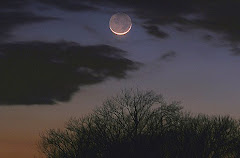
I recently took some time to see the Tim Burton special exhibit at the NY City Museum of Modern Art. It was a worthwhile and wonderfully rich experience to follow Burton's evolution as a storyteller and be given a chance to examine his creative process from sketch to screen.
To me, his greatest creative contribution is his ability to recast the scary into the misunderstood. In other words, what normally would be prejudged as dark, malign, and dangerous is instead cast by him as lighthearted, warm, even tender. His greatest achievement is shifting the public's perception of "darkness" on a mainstream level: and telling me that I ignore the light within the darkness at my peril. He does this humourously and without being preachy about it.
Darkness to me is the quiet core of the subconscious. It is the very place where I need to listen most intently. It needs such delicate attention from me because it holds such special wisdom and because when ignored the many voices hidden away in the depths of that darkness have the potential to do a great deal of damage.
When I explore darkness, I walk a fine line between the moonlight's still illumination and the shadowy realm of extreme heaviness from out-of-control negative emotions. This often explains why lightchasers tend to give less consideration to the darkness--for fear of giving its negative side too much energy and thus allowing it to spread. But to me, light has just as much of a negative side too--artificial light can often be the most extreme and insidious form of darkness. As the Taoist symbol shows, true darkness is a companion to true light; it completes rather than competes with the light; it is its precursor and sequel--the dark tells me where my inner light is most needed--where the natural cycle of day and night needs to appear next.
Like with all energy, a relationship has to be established and built up with the dark over time for any breakthroughs to be made. Burton discovered a way to identify, honor, and give form to the voices of the night that occupy the low lit rooms of his psyche--many of which are illustrated and tracked by the exhibit from conception to completion. I wonder what more I could discover if I did the same thing?
It's not the greatest resource but here is the official exhibit interactive webpage.







No comments:
Post a Comment